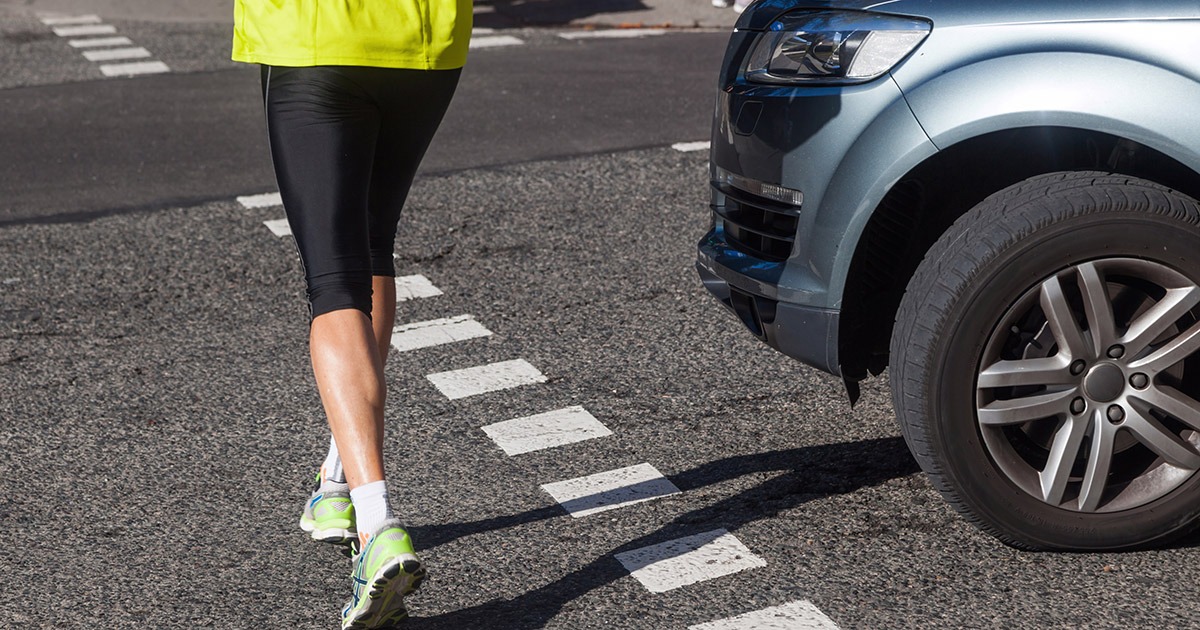
In 2017, nearly 6,000 pedestrians were killed in traffic crashes in the United States, according to the Centers for Disease Control and Prevention (CDC). That’s about one death every 88 minutes. About an additional 137,000 were treated in emergency departments for injuries.
The National Highway Traffic Safety Administration (NHTSA) states that there was a more than three percent increase in the number of pedestrians killed in traffic crashes in 2018 versus 2017, totaling 6,283 deaths.
Below, we look at the most common causes of these accidents, in the hopes of helping you avoid them!
1. Alcohol Impairment
The CDC notes that almost half of crashes that resulted in a pedestrian death involved alcohol either for the driver or the pedestrian. One in every three fatal pedestrian crashes involved a pedestrian with a blood alcohol concentration of at least 0.08 grams per deciliter (g/dL), while 17 percent involved a driver with the same. Some fatal pedestrian crashes involved both.
2. Age
In 2017, pedestrians aged 65 and older accounted for one-fifth (20 percent) of all pedestrian deaths and an estimated 10 percent of all pedestrian injuries. The NHTSA states that older adults are more likely to die after being struck by a vehicle due to their frailty or physical complications. Typically, pedestrian crashes involving older individuals involve crashes at intersections, with left-turning vehicles, and occur at long street crossings.
On the other side of the spectrum, one in every five children under the age of 15 killed in traffic crashes in 2017 were pedestrians. According to a 2013 study, toddlers are most likely to be injured in driveways, where drivers moving backward can’t see them. Adolescents are also at risk as they’re more likely to walk at night, walk while intoxicated, and walk while distracted by phones.
3. Speeding
Higher vehicle speeds increase both the likelihood of a pedestrian being struck by a car, and the severity of the injury. In a 2009 study, researchers found that the fatality risk at about 30 miles per hour (mph) was about twice as high as the risk of at 25 mph and more than five times higher than the risk at about 18 mph.
An investigation by the NHTSA discovered that only five percent of pedestrians would die when struck by a vehicle traveling at 20 miles per hour or less. The NHTSA recommended reductions in speed limits, police enforcement, and public education.
4. Nighttime Walking
Most pedestrian deaths occur when pedestrians are walking at night, rather than during the day. The reduced visibility makes pedestrians harder for motorists to see. If pedestrians then cross at non-intersection locations, they put themselves at risk.
The NHTSA states that in the winter of 2017, about 26 percent of pedestrian fatalities occurred from 6:00 p.m. to nearly 9:00 p.m., followed by about 16 percent from 9:00 p.m. to near midnight. During the summer months, more pedestrian fatalities (34 percent) occurred from 9:00 p.m. to near midnight than at any other time.
Safety Tips for Pedestrians
To reduce your risk of getting hurt while walking, follow these tips from the NHTSA:
- Walk on a sidewalk or path when available.
- If there is no sidewalk or path, walk on the shoulder facing traffic and stay alert.
- Be cautious when sharing the road with vehicles—never assume a driver sees you.
- Cross streets at crosswalks or intersections whenever possible. If there is none, locate a well-lit area and wait for a significant gap in traffic.
- Be visible—wear bright clothing during the day and add reflective materials at night. It’s also best to use a flashlight at night so drivers can see you.
- Avoid alcohol and drugs when walking.


